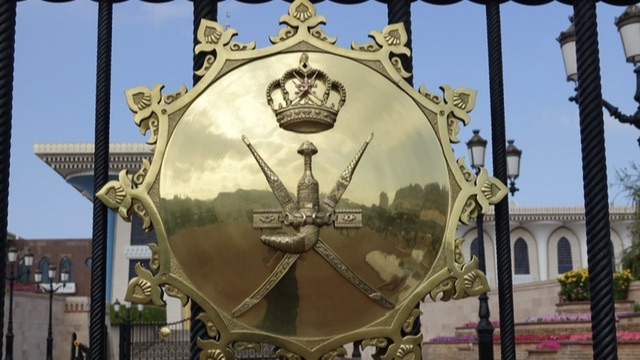(Continued from the previous text)
This flatbread is so delicious, different from the naan of Xinjiang, the guokui of Shaanxi, and the pancakes of the north. After finishing, we ordered two more to take away.
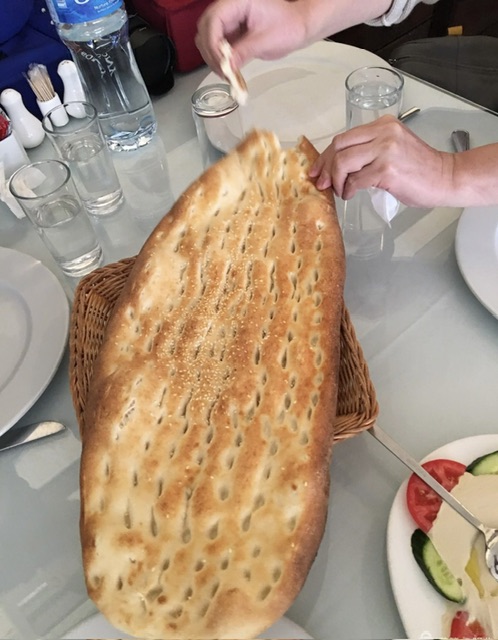
This trip can be considered a food journey, having tasted authentic Yemeni, Lebanese, and Indian cuisine, along with this Turkish meal.
After lunch, the afternoon activities are about to begin.
In the afternoon, we will visit the palace.
Oman is one of the oldest countries on the Arabian Peninsula.
It was once the dominant power of the Indian Ocean.
It was once the shipbuilding center of the Arabian Peninsula.
It was the hometown of the sailor Sinbad.
It is also the origin of One Thousand and One Nights.
It is a major producer of frankincense.
It is an important stop on the ancient Maritime Silk Road.
Sultan Qaboos Grand Mosque is the third largest mosque in the world and the main mosque in Oman. The Grand Mosque is a modern architectural style building, entirely white, and is the most impressive religious building in Oman.
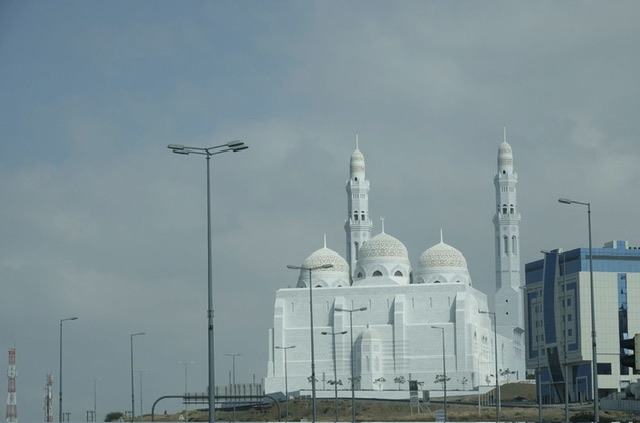
Along the way are the streets of the new district of the capital, Muscat, the urban landscape is breathtaking.
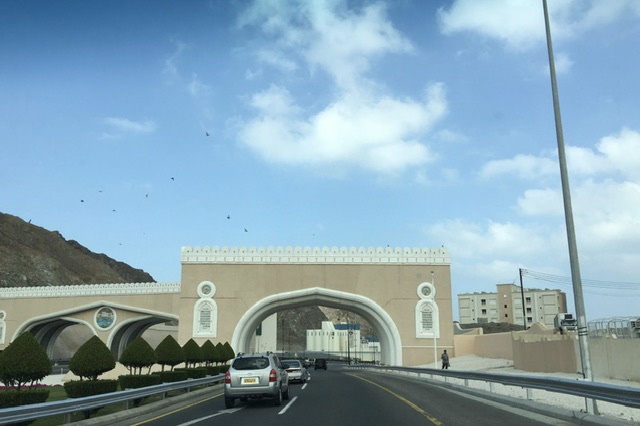
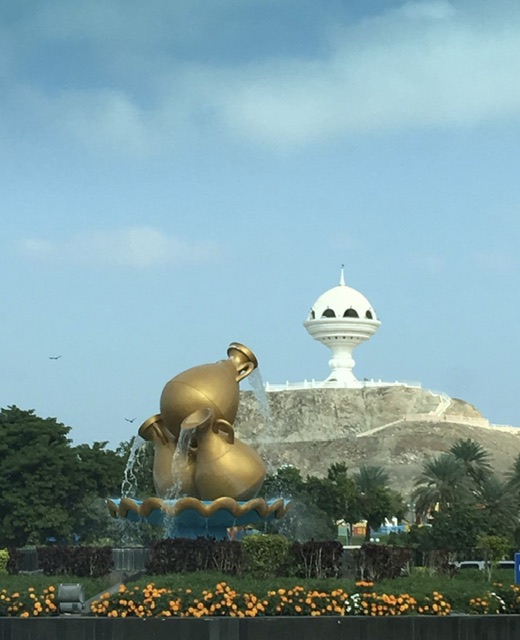
We stand on a high point overlooking the old city.
The old town is located at the easternmost part of Muscat, where the city first developed. Inside the old town, there is a magnificent royal palace, and deep within the narrow alleys are traditional Arab houses, preserving two ancient city gates and a section of the city wall, nestled between mountains and the sea, with steep and varied mountain shapes reflecting against the sea, creating a spectacular view.
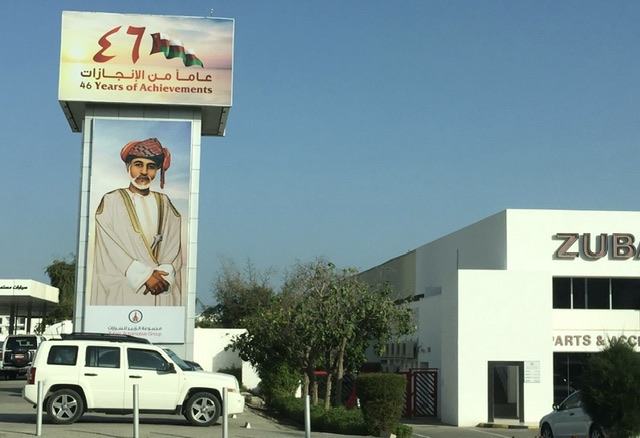
In Oman and the UAE, there are loudspeakers at the tops of tall mosque minarets, which play the Quran at the prescribed prayer times.
Qaboos bin Said, who deposed his father in July 1970, ascended the throne and became the fourteenth Sultan of Oman, working and residing in the Al Alam Palace in the old city of Muscat.
Born into a feudal dynasty, Qaboos bin Said is deeply rooted in feudal thought, embodying roles such as emperor, king, and monarch, while also serving as prime minister, and concurrently holding the positions of foreign, defense, and finance ministers, without the need for a constitution, parliament, or political parties. My Oman, I make the rules!
The Al Alam Palace was originally built by Qaboos's grandfather's grandfather's grandfather, Imam Sultan, and has a history of over two hundred years. The current palace, with its golden and blue exterior, was rebuilt in 1972.
The palace is not open to tourists, although Qaboos spends most of his time elsewhere in Oman. However, visitors can stroll around the square outside the palace and take a "been here" photo.
(ALALAM) Palace.
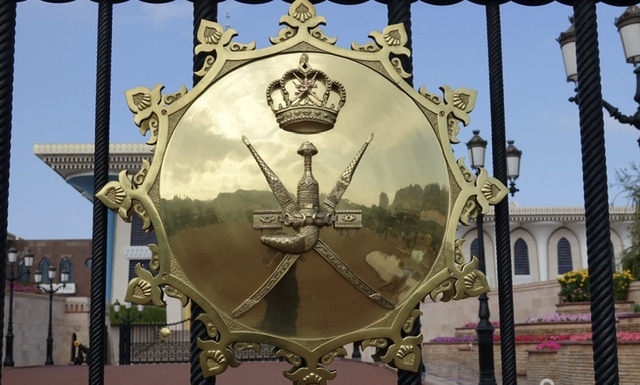
The cannon at the palace gate is surprisingly
an Omani dagger located within a sheath, along with two crossed Arab sabers. This pattern has been used by the Omani royal family since the eighteenth century as an official emblem, later evolving into the national emblem.
In front of the palace, a handsome Omani guy, who is a local tour guide, heard that I was Chinese and wanted to take a photo with me. His job is to be a guide for luxury cruise ships.
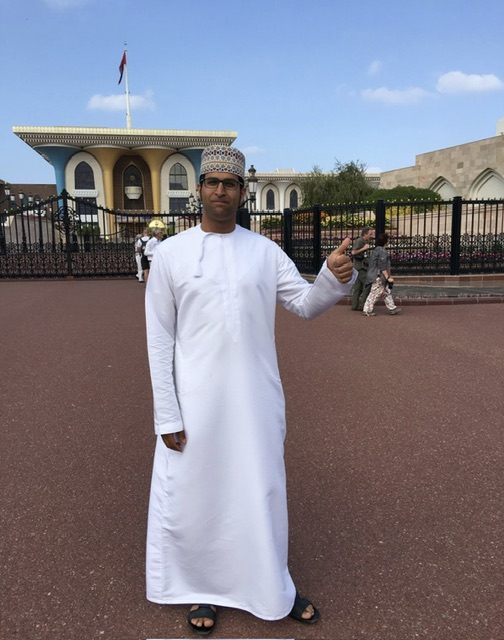
The Al Alam Palace is surrounded by Al Jalali Fort, Al Mirani Fort, the Oman National Museum, and the Oman Ministry of Finance building.
Did you see the palace's defensive weapons? They are also decorations.
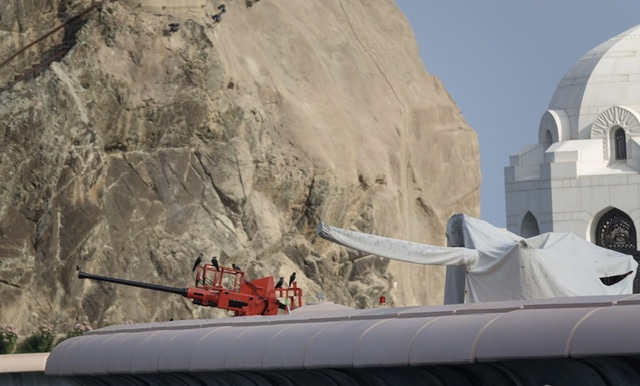
After touring the palace, we arrived at the harbor dock.
Muscat Port has had a special charm for centuries, attracting merchant ships from all over the world to dock here. Muscat Port is the only port on the Maritime Silk Road that passes through Arabia. In the stories of "One Thousand and One Nights," Sinbad set sail from here and eventually reached China after seven voyages.
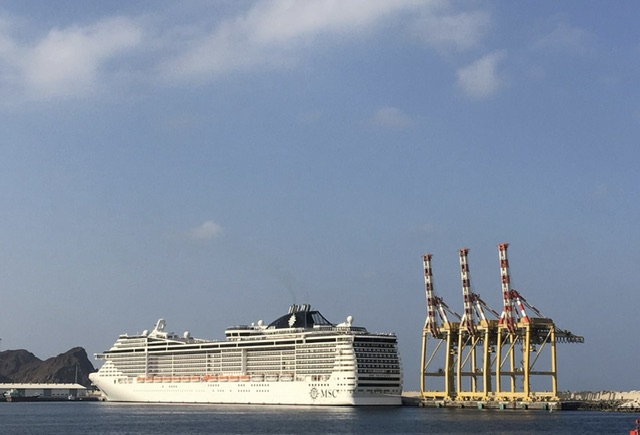
Passing through the port, we arrived at the bustling commercial market area.
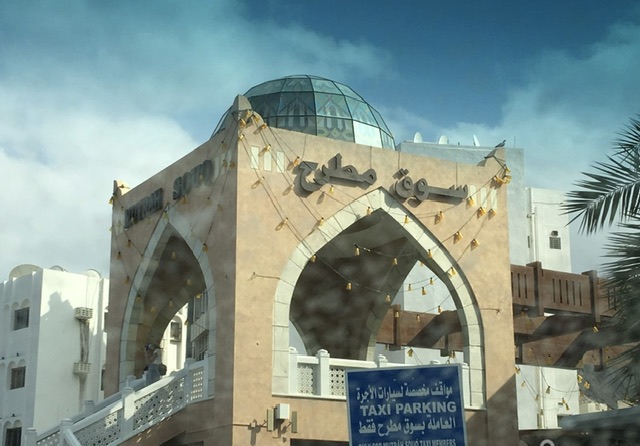
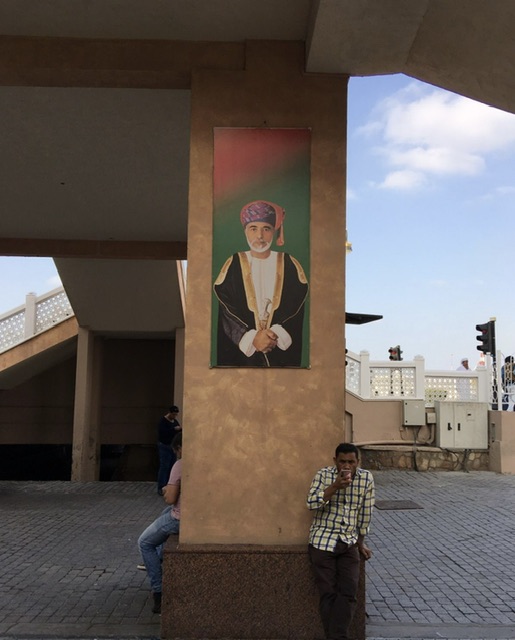
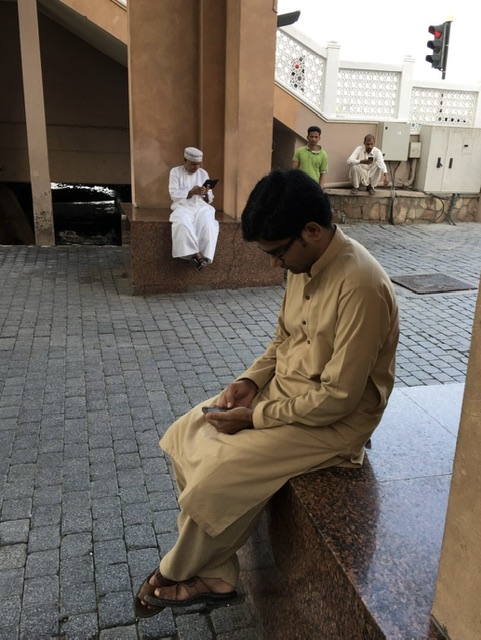
The Muttrah Souq is the oldest market in Muscat, closely related to the lives of the people here, and is a great place for treasure hunting. There are many shops inside, with local handicrafts, frankincense, carpets, and more being particularly distinctive. The Muttrah Souq has hundreds of shops of various sizes, selling a wide variety of goods, such as exquisite silver daggers, Bedouin jewelry, frankincense, herbs, spices, honey, perfumes, carpets, and clothing.
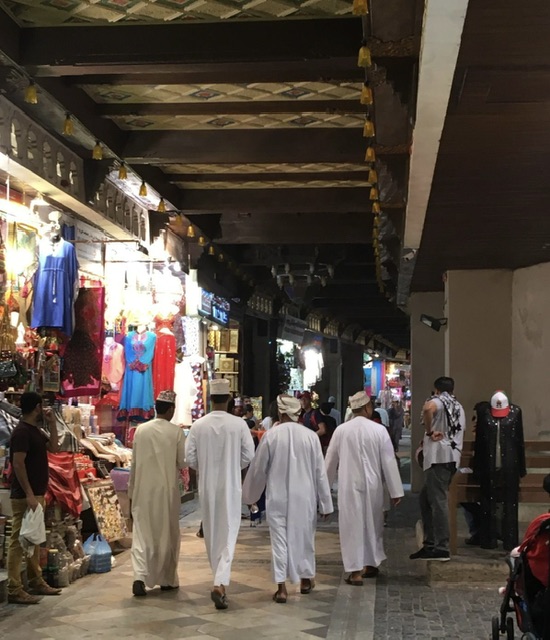
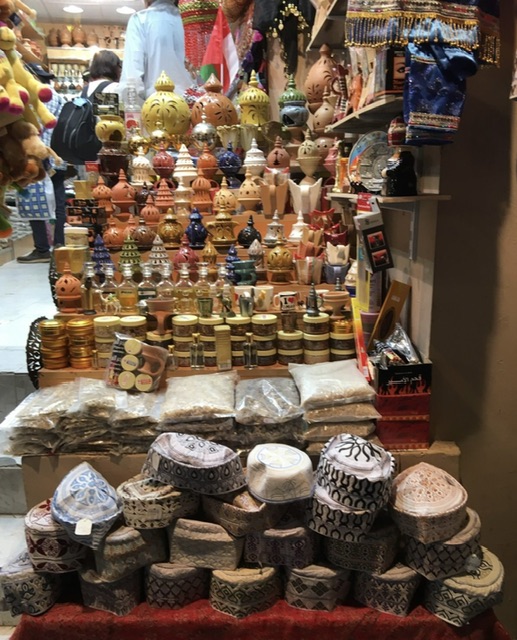
Here, foreign tourists are mostly Europeans and Americans. My companion, Old Yang, and I also joined in, sipping coffee and smoking while enjoying the seaside scenery, feeling very comfortable.
In the Gulf Arab countries, only Omanis wear this upright hat.
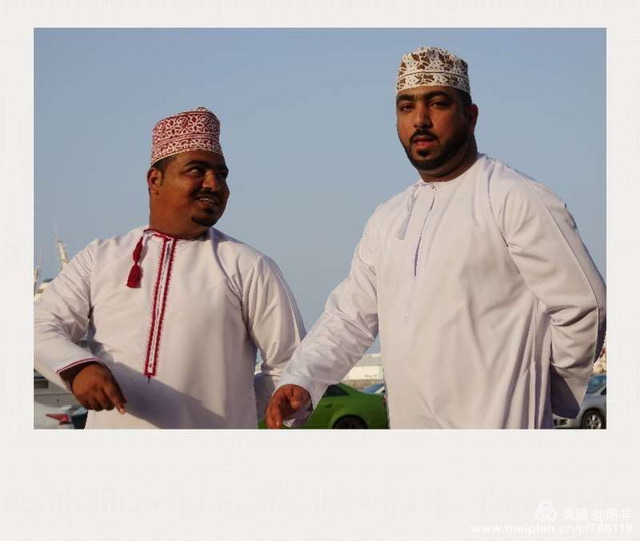
All activities in Oman have come to an end. Tomorrow (February 1), we will drive back to Dubai in the UAE from the capital, Muscat.
Oman left a deep impression on us. Due to time constraints, if we stayed a few more days, we could also see sea turtles laying eggs, go sandboarding in the depths of the beach, stay at a "One Thousand and One Nights" desert hotel, jump into the "sinkhole" for swimming, and go out to see dolphins...
We took advantage of the Chinese New Year holiday to visit Oman.
Oman is really suitable for Chinese people to spend seven days here during the Spring Festival. Rent a four-bedroom apartment, cook for ourselves with family and friends, enjoy the blue sky and white clouds, visit historical sites, and have fun in the desert.
I want to come back next time!
(The end of the text)
